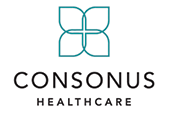Summer is here! With it comes hot temperatures. To avoid heat-related illnesses in the workplace, consider implementing the following preventive measures:
- Provide adequate ventilation: Ensure that work areas have proper ventilation or access to air conditioning, especially in areas where heat-generating equipment is used. Proper airflow helps dissipate heat and reduces the risk of heat-related illnesses.
- Offer regular breaks: Encourage employees to take frequent breaks in cool or shaded areas. Breaks allow them to rest, hydrate, and cool down their body temperature. Schedule work tasks accordingly to minimize exposure to peak heat hours.
- Promote hydration: Provide access to cool drinking water and encourage employees to stay hydrated throughout the day. Remind them to drink water even if they don’t feel thirsty. Avoid or limit the consumption of caffeine and sugary drinks as they can contribute to dehydration.
- Train employees on recognizing symptoms: Educate workers on the signs and symptoms of heat-related illnesses such as heat exhaustion and heatstroke and include the importance of hydration. Encourage them to monitor themselves and their colleagues for any indications of overheating.
- Modify work attire: Allow employees to wear lightweight, loose-fitting clothing made from breathable fabrics. Consider providing or allowing the use of personal protective equipment (PPE) that is specifically designed to keep workers cool and protected.
- Monitor weather conditions: Stay updated on weather forecasts and heat advisories to anticipate high heat days. This information can help in implementing necessary precautions and adjusting work plans accordingly.
Every workplace is unique. It is important to assess specific risks and tailor preventive measures accordingly to ensure the safety of your employees and reduce injury. Enjoy your summer!
Questions regarding LeadingAge Washington’s Group Retro program, contact:
- Scott DeHem, Vice President of Claims, Comprehensive Risk Management/Risk Finance, scott@riskfinance.net
- Lynn Monaghan, LeadingAge WA Consultant, LMonaghan@LeadingAgeWA.org




